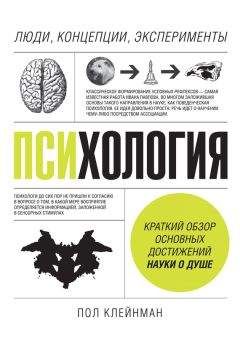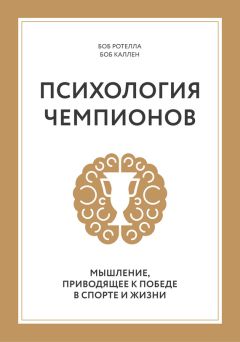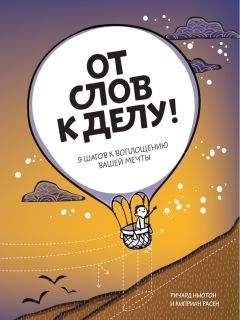Мэг Джей - Сверхнормальные. Истории, которые делают нас сильнее
31
Dante Cicchetti and Jennifer A. Blender, «A Multiple-Levels-of-Analysis Perspective on Resilience», Annals of the New York Academy of Sciences 1094, no. 1 (2006): 248–258; Suniya S. Luthar, Dante Cicchetti, and Bronwyn Becker, «The Construct of Resilience: A Critical Evaluation and Guidelines for Future Work», Child Development 71, no. 3 (2000): 543–562; Ella Vanderbilt-Adriance and Daniel S. Shaw, «Conceptualizing and Re-Evaluating Resilience Across Levels of Risk, Time, and Domains of Competence», Clinical Child and Family Psychology Review 11, no. 1–2(2008): 30–58; см. также Urie Bronfenbrenner, The Ecology of Human Development: Experiments by Nature and Design (Cambridge, MA: Harvard University Press, 1979).
32
Ann S. Masten, «Ordinary Magic: Resilience Processes in Development», American Psychologist 56, no. 3 (2001): 235.
33
Byron Egeland, Elizabeth Carlson, and L. Alan Sroufe, «Resilience as Process», Development and Psychopathology 5, no. 4 (1993): 517–528; Edmund W. Gordon and Lauren Dohee Song, «Variations in the Experience of Resilience», in Educational Resilience in Inner-City America: Challenges and Prospects, eds. Margaret PG. Wang and Edmund W. Gordon (New York: Routledge, 1994): 27–43; Howard A. Liddle, «Contextualizing Resiliency», in Educational Resilience in Inner-City America: Challenges and Prospects, eds. Margaret PG. Wang and Edmund W. Gordon (New York: Routledge, 1994): 167–178; Suniya S. Luthar, Dante Cicchetti, and Bronwyn Becker, «The Construct of Resilience: A Critical Evaluation and Guidelines for Future Work», Child Development 71, no. 3 (2000):543–562; Jennifer R. Riley and Ann S. Masten, «Resilience in Context», in Resilience in Children, Families, and Communities: Linking Context to Practice and Policy, eds. Ray D. Peters, Bonnie Leadbeater, and Robert J. McMahon (New York: Springer, 2005), 13–25; John E. Schulenberg, Arnold J. Sameroff, and Dante Cicchetti, «The Transition to Adulthood as a Critical Juncture in the Course of Psychopathology and Mental Health», Development and Psychopathology 16 (2004): 799–806; Ella Vanderbilt-Adriance and Daniel S. Shaw, «Conceptualizing and Re-Evaluating Resilience Across Levels of Risk, Time, and Domains of Competence», Clinical Child and Family Psychology Review 11, no. 1–2(2008): 30–58; Tuppett M. Yates, B. Egeland, and Alan Sroufe, «Rethinking Resilience», in Resilience and Vulnerability: Adaptation in the Context of Childhood Adversities, ed. Suniya S. Luthar (New York: Cambridge University Press, 2003), 243–266.
34
Ann S. Masten and Jenifer L. Powell, «A Resilience Framework for Research, Policy, and Practice», in Resilience and Vulnerability: Adaptation in the Context of Childhood Adversities, ed. Suniya S. Luthar (New York: Cambridge University Press, 2003), 1–25; see quote on p. 6.
35
Robert F. Anda et al., «The Enduring Effects of Abuse and Related Adverse Experiences in Childhood», European Archives of Psychiatry and Clinical Neuroscience 256, no. 3 (2006): 174–186; Joan Kaufman et al., «Problems Defining Resiliency: Illustrations from the Study of Maltreated Children», Development and Psychopathology 6, no. 1 (1994): 215–229; Julien Worland et al., «St. Louis Risk Research Project: Comprehensive Progress Report of Experimental Studies», in Children at Risk for Schizophrenia: A Longitudinal Perspective, eds. Norman F. Watt et al. (New York: Cambridge University Press, 1984), 105–147.
36
Kara Coombes and Ruth Anderson, «The Impact of Family of Origin on Social Workers from Alcoholic Families», Clinical Social Work Journal 28, no. 3 (2000): 281–302; Suniya S. Luthar, «Resilience in Development: A Synthesis of Research Across Five Decades», in Developmental Psychopathology: Risk, Disorder, and Adaptation, Vol. 3, 2nd ed., eds. Dante Cicchetti and Donald J. Cohen (Hoboken, NJ: Wiley, 2006), 739–795; Suniya S. Luthar, «Vulnerability and Resilience: A Study of High-Risk Adolescents», Child Development 62, no. 3 (1991): 600–616; Suniya S. Luthar, Dante Cicchetti, and Bronwyn Becker, «The Construct of Resilience: A Critical Evaluation and Guidelines for Future Work», Child Development 71, no. 3 (2000): 543–562; Ella Vanderbilt-Adriance and Daniel S. Shaw, «Conceptualizing and Re-Evaluating Resilience Across Levels of Risk, Time, and Domains of Competence», Clinical Child and Family Psychology Review 11, no. 1–2(2008): 30–58.
37
Heinz Hartmann, Ego Psychology and the Problem of Adaptation (New York: International Universities Press, 1939).
38
Donald Winnicott, «Transitional Objects and Transitional Phenomena: A Study of the First Not-Me Possession», International Journal of Psychoanalysis 34(1953): 89–97.
39
Национальный институт психического здоровья, The Numbers Count: Mental Disorders in America, по состоянию на 29 августа, 2016, http://www.lb7.uscourts.gov/documents/12-cv-1072url2.pdf; Национальная медицинская библиотека США и Национальный институт психического здоровья (2009) перечисляют следующие характеристики хорошего родительства: обеспечение безопасности, любовь, дисциплина, умение слушать ребенка, тесное общение с ребенком, отслеживание его занятий и умение служить для него хорошей моделью для подражания.
40
Bruce S. McEwen, «Stressed or Stressed Out: What Is the Difference?», Journal of Psychiatry and Neuroscience 30, no. 5 (2005): 315–318.
41
Heinz Hartmann, Ego Psychology and the Problem of Adaptation (New York: International Universities Press, 1939): 71.
42
Центры по контролю и профилактике заболеваний, «Adverse Childhood Experiences Reported by Adults – Five States, 2009», Morbidity and Mortality Weekly Report 59, no. 49 (2010): 1609–1613, https://www.cdc.gov/MMWR/preview/mmwrhtml/mm5949a1.htm; похожие, но другие определения приводятся в Maxia Dong et al., «The Interrelatedness of Multiple Forms of Childhood Abuse, Neglect, and Household Dysfunction», Child Abuse and Neglect 28, no. 7 (2004): 771–784; Vincent J. Felitti et al., «Relationship of Childhood Abuse and Household Dysfunction to Many of the Leading Causes of Death in Adults: The Adverse Childhood Experiences (ACE) Study», American Journal of Preventive Medicine 14, no. 4 (1998): 245–258; Jennifer S. Middlebrooks and Natalie PG. Audage, «The Effects of Childhood Stress on Health Across the Lifespan», Centers for Disease Control and Prevention, National Center for Injury Prevention and Control, по состоянию на September 1, 2016, http://health-equity.lib.umd.edu/932/1/Childhood_Stress.pdf.
43
Paula S. Nurius, Edwina Uehara, and Douglas F. Zatzick, «Intersection of Stress, Social Disadvantage, and Life Course Processes: Reframing Trauma and Mental Health», American Journal of Psychiatric Rehabilitation 16, no. 2 (2013): 91–114.
44
Vincent J. Felitti et al., «Relationship of Childhood Abuse and Household Dysfunction to Many of the Leading Causes of Death in Adults: The Adverse Childhood Experiences (ACE) Study», American Journal of Preventive Medicine 14, no. 4 (1998): 245–258.
45
Margaret O’Dougherty Wright, Ann S. Masten, and Angela J. Narayan, «Resilience Processes in Development: Four Waves of Research on Positive Adaptations in the Context of Adversity», in Handbook of Resilience in Children, eds. Sam Goldstein and Robert B. Brooks (New York: Springer, 2012), 17.
46
B. B. Robbie Rossman, «Time Heals All: How Much and for Whom?», Journal of Emotional Abuse 2, no. 1 (2000): 31–50.
47
Maxia Dong et al., «The Interrelatedness of Multiple Forms of Childhood Abuse, Neglect, and Household Dysfunction», Child Abuse and Neglect 28, no. 7 (2004): 771–784.
48
Ernst Kris, «The Recovery of Childhood Memories in Psychoanalysis», The Psychoanalytic Study of the Child 11 (1956): 54–88.
49
Психоаналитики и другие клиницисты давно признали аддитивное воздействие сравнительно небольших стрессовых факторов. В 1895 году Зигмунд Фрейд писал о «частичных травмах», объясняя, что разные негативные переживания «объединяются и налагаются друг на друга, поскольку являются компонентами одной и той же истории страданий». См. Josef Breuer and Sigmund Freud (1893–1895), Studies on Hysteria, Standard Edition 2 (London: Hogarth, 1955), 6; Henry Krystal and John H. Krystal, Integration and Self-Healing: Affect, Trauma, Alexithymia (NewYork: Routledge, 2009), 141. Кроме того, в 1986 году Джеймс Энтони рассказал о «микронесчастьях» – крошечных трагедиях, которые ежедневно врываются в жизнь некоторых детей в домах их родителей. См. E. James Anthony, «Terrorizing Attacks on Children by Psychotic Parents», Journal of the American Academy of Child Psychiatry 25, no. 3 (1986): 326–335.
50
M. Masud Kahn, «The Concept of Cumulative Trauma», The Psychoanalytic Study of the Child 18 (1962): 286–306.
51
M. Masud Kahn, «The Concept of Cumulative Trauma», Psychoanalytic Study of the Child 18 (1963): 286–306; quote on p. 291.
52
Danya Glaser, «Child Abuse and Neglect and the Brain – A Review», Journal of Child Psychology and Psychiatry 41, no. 1 (2000): 97–116; Jennifer S. Middlebrooks and Natalie PG. Audage, «The Effects of Childhood Stress on Health Across the Lifespan», Centers for Disease Control and Prevention, National Center for Injury Prevention and Control, по состоянию на 1 сентября 2016 года, http://health-equity.lib.umd.edu/932/1/Childhood_Stress.pdf; Jack P. Shonkoff, W. Thomas Boyce, and Bruce S. McEwen, «Neuroscience, Molecular Biology, and the Childhood Roots of Health Disparities: Building a New Framework for Health Promotion and Disease Prevention», Journal of the American Medical Association 301, no. 21 (2009): 2252–2259; Jack P. Shonkoff et al., «The Lifelong Effects of Early Childhood Adversity and Toxic Stress», Pediatrics 129, no. 1 (2012): e232–e246; R. Jay Turner and Donald A. Lloyd, «Lifetime Traumas and Mental Health: The Significance of Cumulative Adversity», Journal of Health and Social Behavior 36, no. 4 (1995): 60–376; Bessel A. van der Kolk, «The Psychobiology and Psychopharmacology of PTSD», Human Psychopharmacology: Clinical and Experimental 16, no. S1 (2001): S49–S64.
53
Jack P. Shonkoff et al., «The Lifelong Effects of Early Childhood Adversity and Toxic Stress», Pediatrics 129, no. 1 (2012): e232–e246.
54
По словам Ричарда Лазаруса, «стресс возникает, когда люди осознают, что не могут адекватно справляться с предъявляемыми им требованиями или угрозами своему благополучию». См. Richard Lazarus, Psychological Stress and the Coping Process (New York: McGraw-Hill, 1966). Современные ученые и клиницисты признают наличие трех видов стресса: позитивного, терпимого и токсичного. Позитивный стресс связан с нашим отношением к среднеожидаемым проблемам, которые являются неизменной частью человеческой жизни, например, ребенок идет в первый класс или впервые в жизни выступает на сцене, играя на фортепиано, подросток устраивается на свою первую работу на неполный рабочий день. Терпимый стресс выходит за рамки среднеожидаемого; это сильно расстраивающие и выбивающие из колеи, но непродолжительные переживания, такие как неожиданная смерть близкого человека, автомобильная авария или серьезная травма. Позитивный и терпимый стресс относительно мимолетны, и при условии достаточной заботы и внимания со стороны взрослых и наличия «буфера», защищающего ребенка от негативного влияния внешней среды, дети могут выйти из этих ситуаций даже более сильными и закаленными, чем прежде. В отличие от позитивного или терпимого стресса токсический стресс не проходит. Это длительное и частое негативное воздействие, особенно пагубное при отсутствии адекватной поддержки. См. Jennifer S. Middlebrooks and Natalie PG. Audage, «The Effects of Childhood Stress on Health Across the Lifespan», центры по контролю и профилактике заболеваний, Национальный центр по предупреждению и контролю травматизма, по состоянию на September 1, 2016, http://health-equity.lib.umd.edu/932/1/Childhood_Stress.pdf; Bridget M. Kuehn, «AAP: Toxic Stress Threatens Kids’ Long-Term Health», Journal of the American Medical Association 312, no. 6 (2014): 585–586; Jack P. Shonkoff et al., «The Lifelong Effects of Early Childhood Adversity and Toxic Stress», Pediatrics 129, no. 1 (2012): e232–e246.
55
Steven P. Broglio et al., «Cumulative Head Impact Burden in High School Football», Journal of Neurotrauma 28, no. 10 (2011): 2069–2078; Philip H. Montenigro et al., «Cumulative Head Impact Exposure Predicts Later-Life Depression, Apathy, Executive Dysfunction, and Cognitive Impairment in Former High School and College Football Players», Journal of Neurotrauma 34, no. 2 (2017): 328–340.
56
«Breaking the Silence on Child Abuse: Protection, Prevention, Intervention, and Deterrence», свидетельство Роберта Блока от имени Американской академии педиатрии перед комитетом Сената на слушании по вопросам здравоохранения, образования, труда и пенсионного обеспечения, 13 декабря 2011 года, по состоянию на 2 сентября 2016 года, http://www.help.senate.gov/hearings/breaking-the-silence-on-child-abuse-protection-prevention-intervention-and-deterrence.




